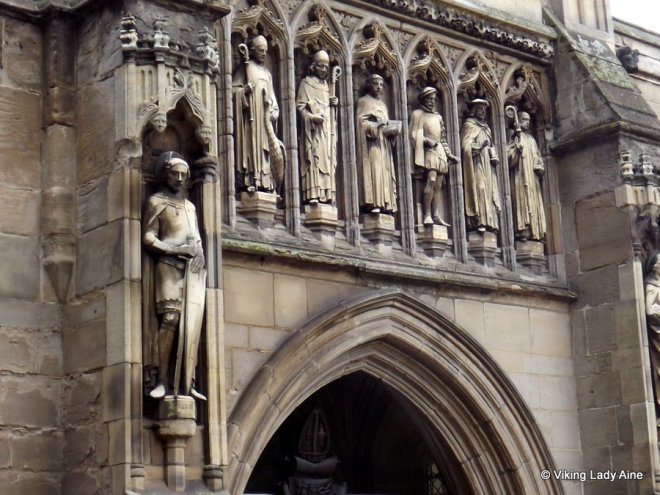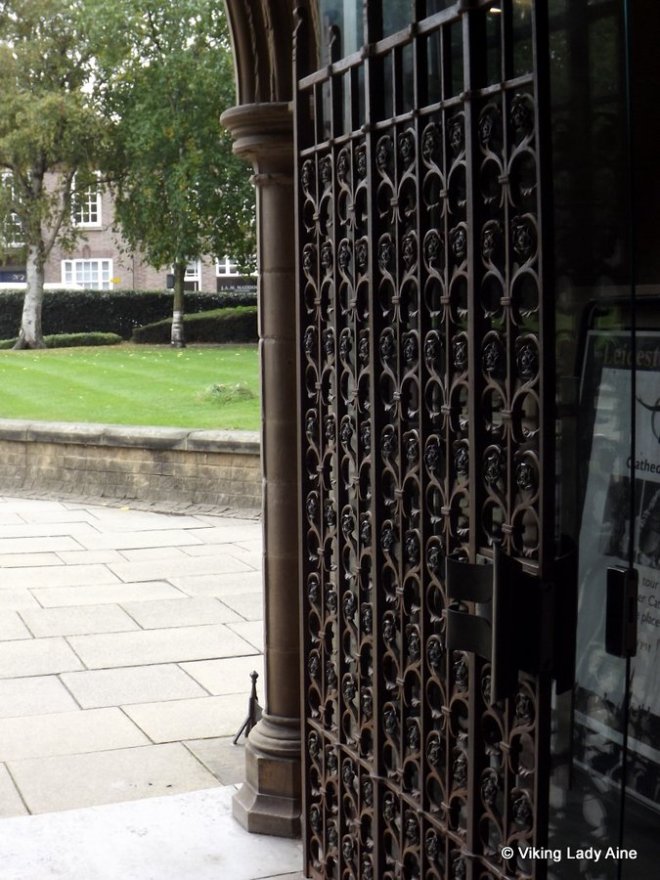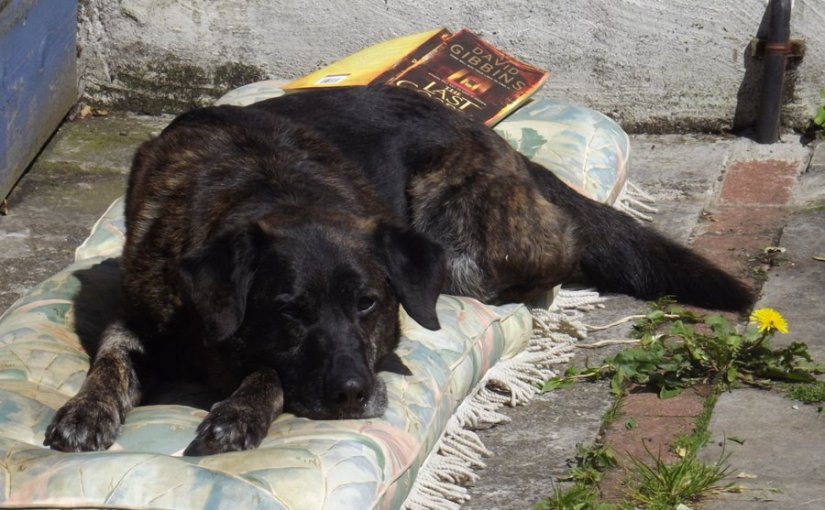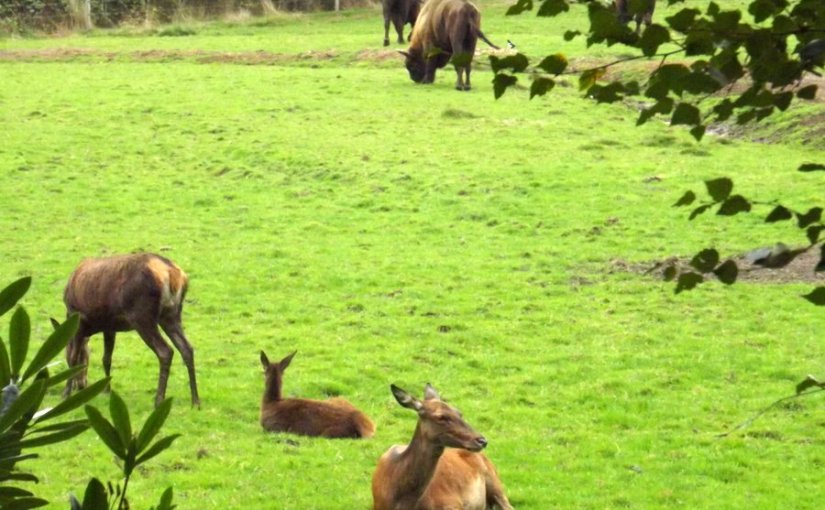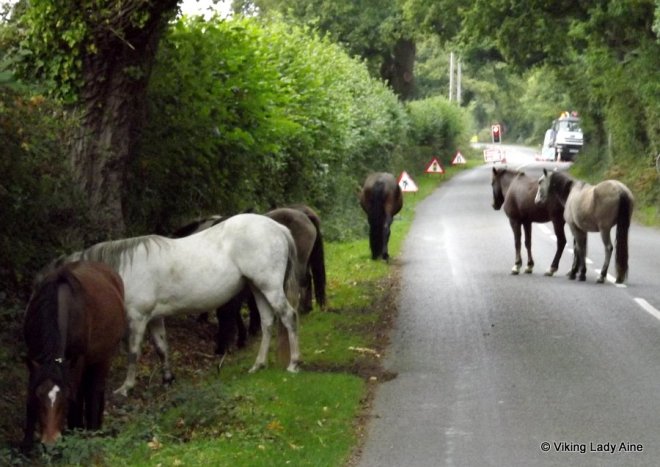While we where in the New Forest we decided to go visit the Wildlife Park near Ashurst. If you are looking for a chilled out way to spend an afternoon, then this is a great place to go see. The staff really know about the animals in the Park, and are so willing to share information. And if you really fancy getting up close and personal with the animals there is the ‘Keepers Experience’.
For us, the first stop was in the Butterfly house. The house is kept at quite a high temperature and humidity, and it played havoc with my camera…. the lens kept fogging over. Added to the speed that the butterflies were moving, so the photos are a little blurry.
This slideshow requires JavaScript.
The otters were next. These guys are so much fun to watch. There were Giant, Eurasian and Asian otters. The funniest guys were the Asian otters. They live in family groups and chatter constantly to each other – especially at feeding time.
This slideshow requires JavaScript.
The Eurasian otter (that’s the European one) apparently is a much more solitary animal. They are mostly active at twilight and in darkness, but you can see them here in the park at feeding time. They survive mainly on fish and small rodents and birds. In the UK numbers declined but are now on the increase due to protection and improvement in water quality.
 Also in the park are a pair of Giant otters. Akuri and Simuni (both male) are part of an international breeding programme for this endangered otter whose numbers are still decreasing in the wild. Giant otters are the largest and rarest of all the otters in the world found only in the Amazon, Orinoco and La Plata rivers of South America. These large animals can eat up to 4 kg of fish each per day, they also eat crustacean, snakes and other small river animals.
Also in the park are a pair of Giant otters. Akuri and Simuni (both male) are part of an international breeding programme for this endangered otter whose numbers are still decreasing in the wild. Giant otters are the largest and rarest of all the otters in the world found only in the Amazon, Orinoco and La Plata rivers of South America. These large animals can eat up to 4 kg of fish each per day, they also eat crustacean, snakes and other small river animals.
This slideshow requires JavaScript.
We followed the path through the park. It’s well sign posted and on thing I noticed was the number of owls here, of all breeds and sizes. Unfortunately I didn’t take any pictures of them. Good reason to go back!
The next residents we met up with were the fallow deer in the deer enclosure.
This slideshow requires JavaScript.
The little doe, Dottie, was a real little dote. Apparently had been raised and bottle fed as a fawn, so she was particularly attached to humans. She followed us around like a little pet, and got very friendly with Bob; if you visit, be aware she has a tendency to try to suck your clothes though (and shoe laces, camera straps, shirt ends……….)!
This slideshow requires JavaScript.
And then the highlight of the day for us – the European Bison. These huge bison, also called the Wisent, are the largest and one of the rarest land mammals in Europe. The bison once roamed in millions, from Spain all the way to the Ural Mountains and the Caucasus, and as far north as Sweden. They had an important role in the formation of the prehistoric European broad-leaved and forested steppe ecosystems. However, by the end of the 19th century, there were only two populations of European bison left in the wild: in Bialowieza Forest (B.b bonasus) and in the West-Caucasus Mountains (B.b.caucasicus). The last European bison in Bialowieza forest died in 1919 and the last bison in the wild in Europe died in the Caucasus in 1927.
They are now being introduced back into the wild through the Rewilding Europe Programme.The wildlife park has three bison bulls that are part of the Rewilding project. Incidentally these guys came from Fota Island Wildlife Park near Cork in Ireland. I have to say we had met one of the keepers during the otter feeding, and after a wonderfully informative conversation with him (Jason), we met again at the bison/red deer pen and he really added to the whole experience. Huge thanks!!!!
This slideshow requires JavaScript.
In the same enclosure as the bison are the Red Deer.
 I have always loved this regal animal. They truly are the Monarch of the Glen…….. or in this case the Monarch of the Park. The Red Deer are the largest land animal in the UK. They are social animals living in male or female groups coming together for breeding during the annual rut. A stag can weigh between 160 – 240kg and the hind weighs around 120 to 170kg.
I have always loved this regal animal. They truly are the Monarch of the Glen…….. or in this case the Monarch of the Park. The Red Deer are the largest land animal in the UK. They are social animals living in male or female groups coming together for breeding during the annual rut. A stag can weigh between 160 – 240kg and the hind weighs around 120 to 170kg.
The male’s magnificent antlers grow in spring each year only to be shed during the following winter. Apparently you can put an age on the stag by counting the points on an antler.
This slideshow requires JavaScript.
I have to say the Red Deer and European Bison were the highlight of our visits, but there was much more to see. Among this were wallabies, wild cats, lynx, wild cats and wolves on sight, but the park has many more animals to see – but seeing them depends on the time of the day/year you visit. When you go to a wildlife park like this, you always have to remember that animals don’t appear on demand…….. they are naturally scared of people – even if they are in a wildlife park. A full list of the animals on the site can be found on the Park website.
Here are a few of the photos of the other animals we saw.
This slideshow requires JavaScript.
If you happen to find yourself anywhere near the New Forest, The Wildlife Park is well worth a visit. And for the kids it has probably the best adventure playground I have ever seen! The park is not a charity and depends on the entrance fees for day to day running. Money well spent! And if you fancy it, you can adopt an animal and help with the upkeep of your chosen animal for six months or a year!! Now that would be a great present to the other half………………

 Behind the street frontage there was the most wonderful little courtyard. You can see the spire of the cathedral over the roof. I can just imagine killing time sitting on that bench with a book.
Behind the street frontage there was the most wonderful little courtyard. You can see the spire of the cathedral over the roof. I can just imagine killing time sitting on that bench with a book.
 Inside on the ground floor is The Mayors Parlour. The room is dominated by a fireplace with a wonderful over mantel. It was build in 1637.
Inside on the ground floor is The Mayors Parlour. The room is dominated by a fireplace with a wonderful over mantel. It was build in 1637. The mayors chair is there as well, and there is also a seat for the representative of the ruler of the land. It has the motto of the Monarch of the United Kingdom (Dieu et mon Droit) over the seat. Mind you it looks a bit uncomfortable!
The mayors chair is there as well, and there is also a seat for the representative of the ruler of the land. It has the motto of the Monarch of the United Kingdom (Dieu et mon Droit) over the seat. Mind you it looks a bit uncomfortable!






